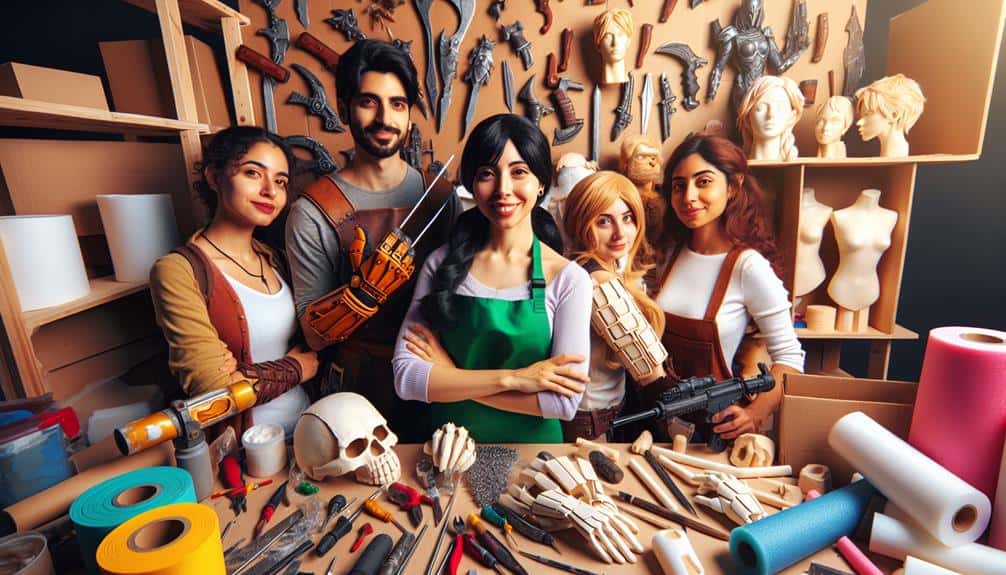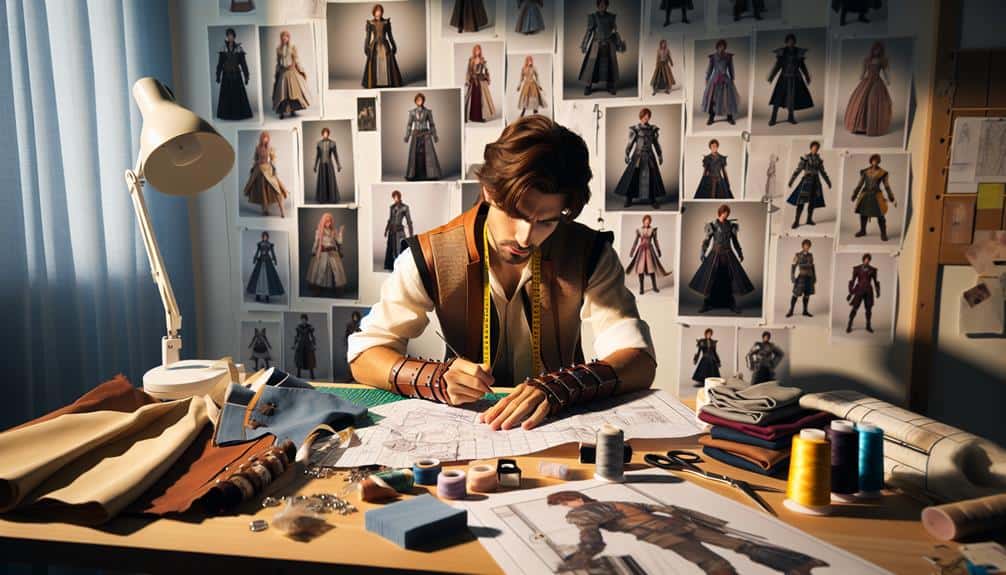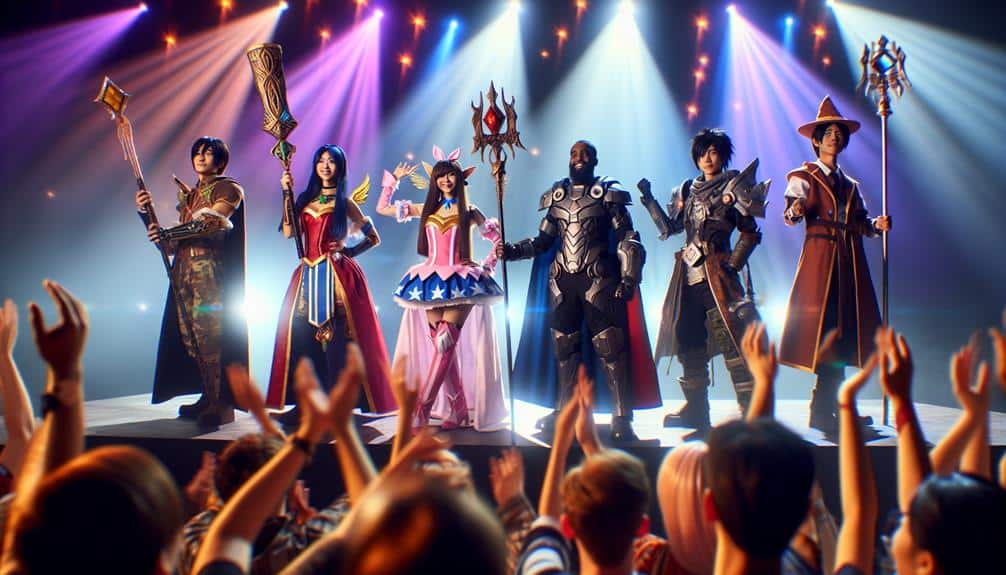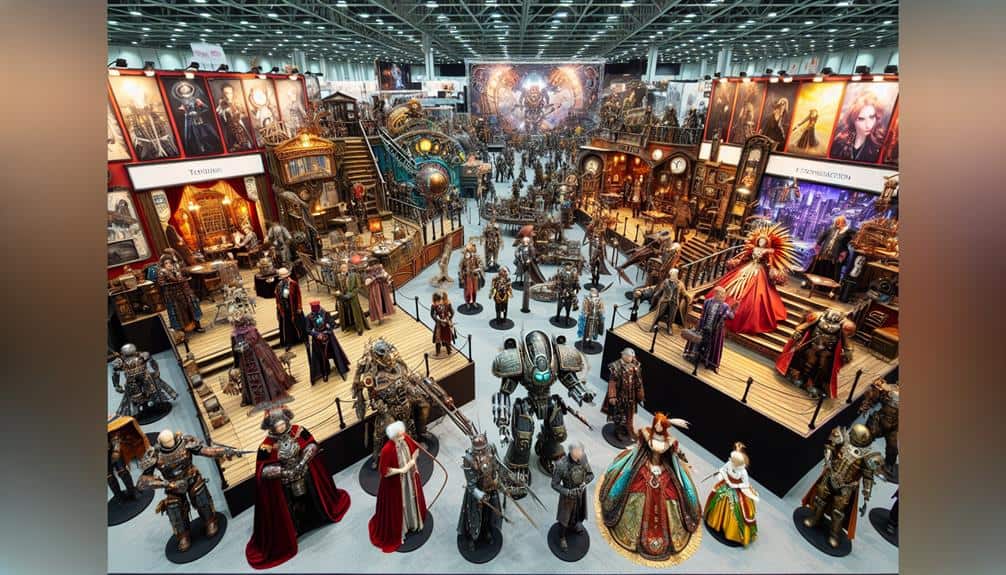Looking to elevate your cosplay game with standout props?
Ever wondered what sets apart a winning prop from the rest?
From crafting lightweight props with foam to integrating eye-catching LED effects, there are various techniques that can make your creations truly stand out at cosplay contests.
But which methods truly make a difference in prop-making excellence?
Let's explore some of the best-kept secrets that could take your cosplay props to the next level.
Key Takeaways
- Foam crafting offers versatility and cost-effectiveness for lightweight props.
- 3D printing enables intricate details and custom attachments for prop perfection.
- LED integration allows for dynamic lighting effects and customization options.
- Weathering techniques like rust effects and paint chipping enhance prop realism for contests.
Foam Crafting for Lightweight Props
Crafting lightweight props using foam involves a versatile and cost-effective method that allows for intricate details and easy customization. When delving into foam crafting for cosplay props, mastering heat shaping is vital. By using heat guns or even simple hairdryers, you can mold foam sheets into various shapes, giving your props a professional and polished look. Remember to work slowly and carefully, as foam can warp if exposed to too much heat at once.
In addition to heat shaping, perfecting adhesive bonding techniques is essential for ensuring your foam props stay intact during conventions or contests. Choose a strong adhesive that's compatible with foam materials, such as specialized foam glue or contact cement. Apply the adhesive evenly on the surfaces you want to bond, press them together firmly, and allow sufficient drying time for a secure hold. Proper adhesive bonding won't only enhance the durability of your props but also contribute to their overall aesthetics.
3D Printing for Detailed Creations
For intricately detailed and precise cosplay props, harness the power of 3D printing technology. 3D printing allows you to bring to life intricate designs with a level of detail that traditional crafting methods struggle to match. The versatility of 3D printing enables you to create custom attachments that seamlessly integrate into your prop, adding functionality and aesthetic appeal.
When it comes to finishing your 3D printed creations, paint finishing is essential to achieve a polished and professional look. Sanding down rough edges and applying layers of paint can transform a basic 3D print into a masterpiece that stands out at cosplay contests. Experiment with different painting techniques to add depth and realism to your props.
With 3D printing, the possibilities are endless. Whether you're replicating iconic weapons or crafting fantastical accessories, this technology opens up a world of creativity for cosplayers looking to take their props to the next level.
LED Integration for Eye-Catching Effects
To elevate your cosplay props to a whole new level of visual impact, consider integrating LED technology for mesmerizing and attention-grabbing effects. LED lights offer a vast array of customization options, allowing you to tailor your props to match the exact aesthetic of your character. By incorporating fiber optics into your designs, you can create intricate patterns and lighting effects that are sure to dazzle onlookers and judges alike.
For those looking to take their LED integration to the next level, delving into Arduino programming can reveal a world of innovation. Arduino boards enable you to control your LED lights with precision, creating dynamic lighting sequences and interactive elements that will set your cosplay prop apart from the rest. The combination of LED technology, fiber optics, and Arduino programming offers endless possibilities for creating eye-catching effects that will leave a lasting impression at any cosplay contest.
Weathering Techniques for Realism
Enhance the authenticity of your cosplay props by mastering weathering techniques that bring a touch of realism to your creations. To achieve a weathered look, consider incorporating rust effects and paint chipping into your prop-making process. Rust effects can be simulated using a combination of textured paint and rust-colored pigments. Apply these strategically to areas where rust would naturally occur, such as metal edges or corners, to add depth and age to your props.
For paint chipping, start by applying a base coat of paint followed by a layer of liquid masking fluid. Once the masking fluid dries, add your desired top coat of paint. Using a fine tool like a toothpick or a small brush, gently remove sections of the top coat to reveal the base coat underneath, creating a realistic chipped paint effect.
Mastering these weathering techniques will elevate the realism of your cosplay props, making them stand out with intricate details and a weathered, lived-in appearance. Experiment with different application methods and practice on scrap materials to perfect your skills before applying them to your final prop creations.
Prop Replicas for Iconic Designs
Elevate your cosplay prop-making skills to the next level by crafting prop replicas inspired by iconic designs that capture the essence of your favorite characters and universes.
When delving into prop replicas, consider the following:
- Metal Sculpting: Embrace the art of metal sculpting to create intricate designs that mirror iconic weapons or accessories. Techniques like welding, shaping, and detailing can bring authenticity to your props, making them stand out in any cosplay contest.
- Woodworking: Master the craft of woodworking to fashion durable props that aren't only visually appealing but also sturdy enough to withstand the rigors of conventions and photoshoots. Utilize tools like saws, sanders, and varnishes to bring your iconic designs to life in a tangible and lasting form.
- Attention to Detail: Pay meticulous attention to detail when replicating iconic designs. From precise measurements to accurate color matching, every aspect contributes to the overall authenticity of your prop replicas. Remember, it's the small details that truly make a prop shine in the world of cosplay.
Frequently Asked Questions
How Can I Incorporate Sound Effects Into My Cosplay Props?
To integrate sound effects into your cosplay props, consider using wireless technology for seamless sound integration. Enhance the interactive user experience by incorporating sensors triggering sounds. This innovative approach will elevate your cosplay game.
What Are Some Tips for Creating Moving or Functional Parts in Cosplay Props?
When creating moving or functional parts in cosplay props, consider incorporating animatronic features. Hidden mechanics can enhance the prop's appearance. Explore motorized components for interactive elements. These techniques will elevate your prop-making skills to the next level.
How Can I Ensure My Cosplay Prop Is Safe and Durable for Convention Use?
To guarantee your cosplay prop is safe and durable for convention use, consider weatherproofing techniques and lightweight materials. Use reinforcement methods to enhance strength, and apply custom painting techniques for a polished finish that can withstand wear and tear.
Are There Any Special Considerations for Creating Props for Group Cosplay or Skits?
Planning group cosplay or skits involves considering group dynamics, ensuring everyone's prop responsibilities align. Coordinate skit rehearsals for seamless performances. Prop storage and transportation solutions should be organized to simplify group efforts and guarantee props' safety and integrity.
What Are Some Innovative Ways to Display or Showcase Cosplay Props During a Contest?
When showcasing your cosplay props, consider adding lighting effects to enhance their features and create a mesmerizing display. Incorporating interactive elements can further engage the audience and elevate your presentation to stand out during the contest.



